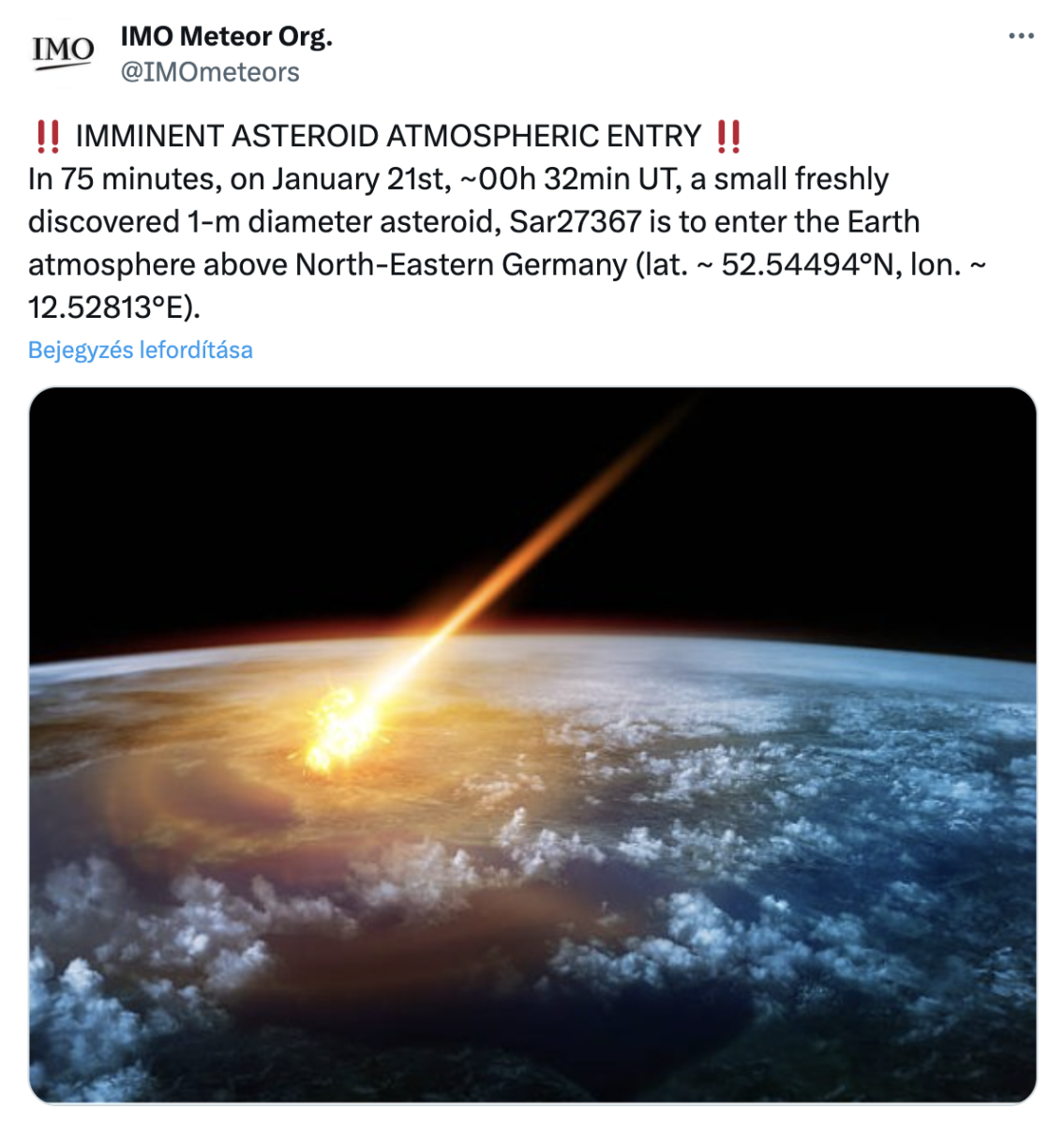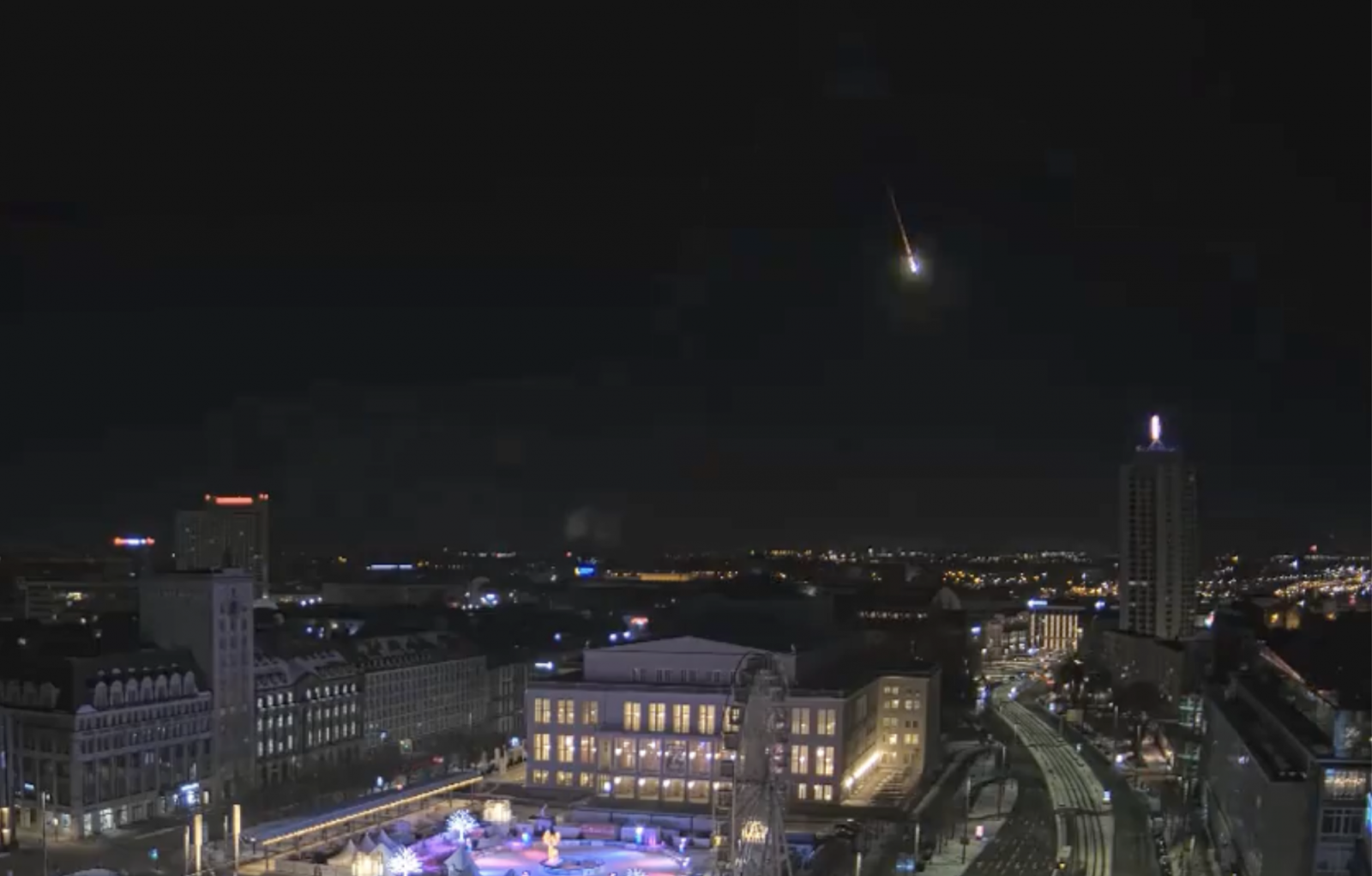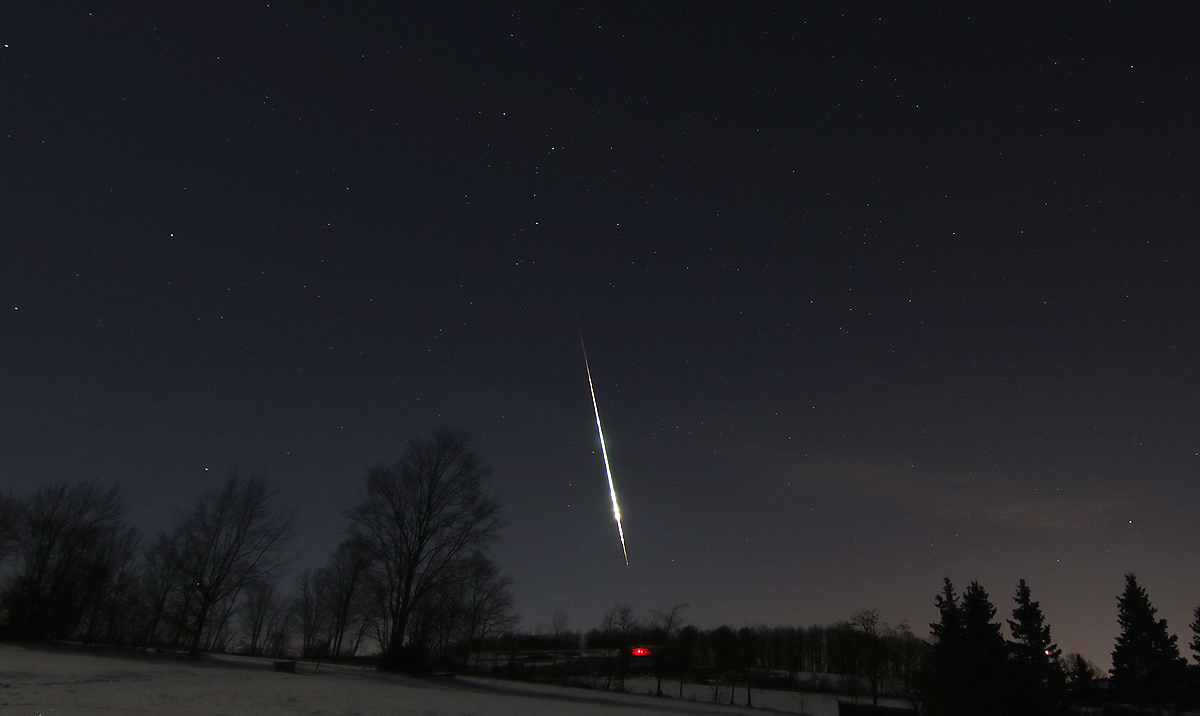Our 60 cm Schmidt telescope, located in the Piszkéstető Observatory in Mátra, has become a genuine minor planet factory in recent years, churning out new discoveries under the guidance of our colleague Krisztián Sárneczky. Among the many discoveries so far, two were heading straight for the planet, on a collision course, but both burned up harmlessly in our atmosphere. And now a third impactor has been found.
Krisztián Sárneczky reports:
I discovered my latest incoming asteroid in images taken last night at 22:50 Hungarian time with our 60 cm Schmidt telescope at the Piszkéstető Observatory. The object was only 110 000 km away from us at the time, but it was not moving very fast, as it was coming straight towards us. Its relatively high brightness of 18th magnitude was strange, which made me think at first that it might be a known asteroid. But I couldn't identify it in any catalog, so I quickly reported it to the MPC and, after stopping the search, returned to confirm.
Apart from the strange brightness/proper motion combination, I had no idea at the time what I had found, because the first detections showed no chance of an impact. This only became clear after subsequent observations, which I greeted with my usual incredulity. However, I suspended the search for further celestial objects and set about following the newcomer. Further position measurements confirmed the impact, with a surprisingly small distance of less than 700 km from the centre of the Earth, and an atmospheric entry point close to Berlin. The final proof was provided by measurements by a German amateur astronomer, because the parallax caused by the geographical distance leads to much more accurate results.
By the time all this was revealed, it was already midnight, so all that was left was the satisfaction of following and managing the exploding social media coverage for another hour and a half. I took the last images five minutes before the asteroid entering the atmosphere, when it was only 6000 km from our planet. It then entered the Earth's shadow and was no longer detectable. Finally, a webcam in Berlin showed the atmospheric glow and flashes of the fireball, although the meteor itself was not visible on this camera. By this time, however, I had already started taking new images, as I resumed my search after half past one, although I did not find another asteroids that night.
The asteroid in the Schmidt telescope's discovery images. The field of view is 10x10 arcmin (Source: Krisztián Sárneczky)
The news of the impending impact swept through social media, especially as it was predicted to strike populated areas. Fortunately, the diameter of the planet was only around one meter (or two ducks) in diameter, which made for a spectacular but harmless celestial spectacle.

‼️ IMMINENT ASTEROID ATMOSPHERIC ENTRY ‼️
In 75 minutes, on January 21st, ~00h 32min UT, a small freshly discovered 1-m diameter asteroid, Sar27367 is to enter the Earth atmosphere above North-Eastern Germany (lat. ~ 52.54494°N, lon. ~ 12.52813°E). pic.twitter.com/py5xbe6jjM
— IMO Meteor Org. (@IMOmeteors) January 20, 2024
And several observers managed to catch the spectacular fireball shortly after half past one in the morning. An image from a Leipzig webcam (video here):

A beautiful shot taken by Tobias Febler (Oberfrauendorf, Germany):

In fact, even from Hungary, despite the 700 km distance, it was just about visible on the horizon. Images by András Pintér from Mihályi, processed by Bence Gucsik (video here):

Congratulations to Krisztián for his new discovery!
